 Most viewed - Kusatsu 草津市 Most viewed - Kusatsu 草津市 |

Kusatsu Shukuba Festival, Shiga Pref. 大奥夢道中848 views
|
|

Kusatsu Shukuba Festival, Shiga Pref.797 views
|
|

Kusatsu Shukuba Festival, Shiga Pref.724 views
|
|

651 views
|
|

Lotus at Karasuma Peninsula in Kusatsu.542 views
|
|

Lotus pond at Karasuma Peninsula.469 views
|
|
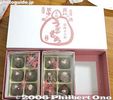
Ubaga Mochi, famous Kusatsu confection.404 views
|
|

Kusatsu-juku was the fifty-second station on the Tokaido Road (following Ishibe-juku) and the sixty-eighth station (following Moriyama-juku) on the Nakasendo Road. During the Edo Period, Kusatsu was an important post town at the crossroads of both roads.375 viewsThe roof is shaped like a Honjin lodge, with a gate. 草津駅
|
|
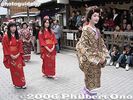
Kusatsu Shukuba Festival, Shiga Pref.366 views
|
|

Black bass, an invasive species in Lake Biwa which eats the babies of native fish. If you catch one of these, you must not throw it back into the lake. Dispose of it.341 views
|
|

Kusatsu Shukuba Festival, Shiga Pref.331 views
|
|

Ancient Fish 古代魚 Sturgeon (チョウザメ) and gar have changed little over millions of years. They are called living fossils. Ancient fish feeding time is 3:40 pm. Sturgeon use their barbel whiskers to feel the bottom for food. They have no teeth.315 views
|
|

Albino Lake Biwa Giant Catfish288 views
|
|

266 views
|
|

Around the lake are disposal bins for invasive fish. Do not throw invasive fish back into the lake.260 views
|
|

About Lake Biwa259 views
|
|

Hiroshige's woodblock print of Kusatsu-juku (69th post town on the Nakasendo) from his Kisokaido series. 254 views
|
|

Largemouth bass (black bass) and bluegill are Lake Biwa's worst invasive species. They eat eggs and fry of native fish, crustaceans, and insects.253 views
|
|

Lake Biwa Giant Catfish is the lake's largest endemic species (max. 1.2 meter long), dubbed the King of Lake Biwa.247 views
|
|

243 views
|
|

Nigorobuna carp (ニゴロブナ 似五郎鮒) - Endangered endemic species, famous for funazushi.241 views
|
|

Gengorobuna carp (ゲンゴロウブナ) - Endangered endemic species239 views
|
|

They serve black bass, Biwa salmon, catfish, and more.239 views
|
|

Main entrance. Open 9:30 am - 5 pm, closed Mon. and the day after a national holiday. MAP232 viewsNote that the museum underwent major renovations and reopened in July 2016. Some of the old exhibits have been replaced and there are also new exhibits like Lake Baikal seals.
|
|

Kusatsu Shukuba Festival, Shiga Pref.231 views
|
|

Biwa trout/salmon - Endemic to Lake Biwa and lives in deep, cold (15˚C), pelagic waters. These are juvenile fish. Delicious!227 views
|
|

Kusatsu-juku Honjin. the Honjin was the town's most luxurious accommodation catering to society's elite like daimyo warlords, Imperial family members including the emperor, and other dignitaries. National Historic Site226 viewsAt stage towns along the major roads like the Nakasendo and Tokaido, the Honjin was the town's most luxurious accommodation catering to society's elite like daimyo warlords, Imperial family members including the emperor, and other dignitaries. It operated during 1635 to 1870. The Honjin is now a museum.
This Honjin in Kusatsu is a very impressive example of traditional architecture. It is designated as a National Historical Place. It underwent a complete renovation and reconstruction during 1989 to 1995. (In case you wonder why such an old building looks so new.) Admission 200 yen. 10-min. walk from Kusatsu Station.
|
|

Museum restaurant serves lake fish.220 views
|
|

Kusatsu town map. Kusatsu basically developed along the old Nakasendo and Tokaido Roads as they intersected before going on to Kyoto, Shiga's neighboring prefecture.197 views
|
|

Water Birds 水辺の鳥 Little Grebe (カイツブリ) - Native species, Shiga's official bird (県の鳥).195 viewsIn classic literature like Tale of Genji, Lake Biwa is called, "Lake of Little Grebes" (Nionoumi).
|
|

Lake Biwa Museum has a world-class freshwater aquarium showing Lake Biwa's endemic species and more. Open 9:30 am - 5 pm, closed Mon. and the day after a national holiday. Admission 600 yen for adults.190 viewsIt shows Lake Biwa's history, fish and wildlife, coexistence with people, and a large lake-fish aquarium. It is also a research facility with a number of researchers and curators.
|
|

Lake Environment and Lifestyle - Exhibition Gallery C 湖の環境と人々のくらし (C展示室)185 views
|
|

Display of endemic fish and other species found only in Lake Biwa.184 views
|
|

Lake Biwa Giant Catfish is shy and often hides in its shelter.182 views
|
|

The tank simulates night time since the Lake Biwa Giant Catfish is nocturnal.182 views
|
|

Bluegill was brought to Japan in 1960 as a food fish by then Crown Prince Akihito who received it as a gift from Chicago, IL. 182 viewsIn 1963, the Fisheries Agency sent bluegill to Lake Biwa. Ten years later, bluegill had spread all over the lake. In 2007 in Shiga, Emperor Akihito expressed regret over bringing the bluegill.
|
|

Water lilies.180 views
|
|

My comprehensive video about Lake Biwa's endemic species and invasive species displayed at the Lake Biwa Museum's freshwater aquarium.180 views
|
|

Ko-Ayu (コアユ) Native species, popular food fish. Ko-ayu is the small variety of ayu (not baby ayu) commonly eaten as tsukudani (佃煮) or tempura. Adult ko-ayu retain their small size.180 views
|
|

Definitions of endemic, native, endangered, and invasive species.179 viewsNative species (在来種)
Naturally inhabits Lake Biwa or Shiga and not introduced by man. May also inhabit places outside Shiga.
Endemic species (固有種・亜種)
Native species found only in Lake Biwa or Shiga.
Endangered species (絶滅危惧種)
Those facing a high risk of extinction in the wild.
Invasive species (侵略的外来種)
Introduced by man and harms the native species, environment, and local ecosystem.
|
|

Wataka (ワタカ) Ischikauia steenackeri - Endangered endemic species, herbivorous fish.179 views
|
|

On another day, we were able to see the two Lake Biwa Giant Catfish out in the open. It is nocturnal, and this tank simulates night time while the aquarium is open during the day. The lake's largest endemic species and Japan's largest catfish. �179 views
|
|

Biwa trout (ビワマス) - Endangered endemic species178 views
|
|

Lake Biwa Littoral Zone 琵琶湖の岸辺の生き物 - Many small organisms live amid aquatic plants near the shore.178 views
|
|

Sugo-Moroko gudgeon (スゴモロコ) - Endangered endemic species178 views
|
|

Numa-ebi shrimp (ヌマエビ), Native species176 views
|
|

Lake Biwa's South Basin.175 views
|
|

Midstream River Fish 川の中流の生き物 - Pale chub and dark chub with streamlined bodies suited for river currents. At bottom are pike gudgeon.175 views
|
|

Waki Honjin souvenir shop and restaurant174 views脇本陣
|
|

Entrance hall atrium174 views
|
|

Aquarium tunnel showing rocky habitat.174 views
|
|

174 views
|
|

Reeds are essential173 views
|
|

Mussel172 views
|
|

Invasive Species 外国からきた魚 - The aquarium has a number of tanks showing invasive species like this Red-eared slider/terrapin (ミシシッピアカミミガメ).171 viewsInvasive species, popular pet, outcompetes native turtles for physical space.
|
|

Special Exhibit: Kunimasu Trout, Once Thought Extinct (black kokanee) Read about it here.171 views[企画展示室] よみがえった魚: クニマス
Oct. 26 – November 24, 2013
Five artificially-hatched kunimasu trout, originally endemic to Lake Tazawa in Akita Prefecture, were exhibited. Kunimasu was thought to be extinct since the 1940s when Lake Tazawa became too acidic due to man-made causes. In 2010, kunimasu was rediscovered in Lake Saiko at the foot of Mt. Fuji in Yamanashi Prefecture.
Apparently, they successfully bred from eggs sent to Lake Saiko in 1935. Local fishermen knew about the fish, but did not know it was kunimasu. Sensational fish story.
Extinct in Lake Tazawa, Oncorhynchus kawamurae
|
|

The photos in this album are video stills taken from my Lake Biwa Museum video. 170 views
|
|

View from Mt. Hiei Driveway.170 views
|
|

Area in front of Lake Biwa Museum.169 views
|
|

Great Cormorant (カワウ) - Invasive native species, eats fish and destroys trees.169 views
|
|

Tempura ko-ayu sweetfish do not grow as large as the ayu sweetfish which grow big in rivers. Ko-ayu remain in the lake and feed on plankton. Such an environment prevents them from getting larger.168 views
|
|

Koi or Nishiki-goi (錦鯉) - Ornamental common carp.168 views
|
|

Red-spotted masu salmon - Endangered native species (サツキマス・アマゴ)168 views
|
|

168 views
|
|

Maruki-bune was the lake's first primitive boat, a dugout canoe made from a single log. This one dates from 3,000 years ago (Jomon Period). 丸木船168 views
|
|

Dr. Yasushi Kusuoka, curator 楠岡 泰 Biotic and Human Interaction Research168 views
|
|

Lake Biwa Museum's freshwater aquarium displays fish species endemic to Lake Biwa, found no where else.167 views
|
|

"Gigi" talking catfish (ギギ) Pelteobagrus nudiceps - Native species167 views
|
|

Dr. Mark J. Grygier, Ph.D Biotic and Human Interaction Research167 views
|
|

Fish with Unusual Traits 面白い習性の魚 - Gigi talking catfish.166 views
|
|

Lake Fish from Other Countries 世界の湖の魚たち - Chinese high fin banded shark (エンツュイ) from Lake Dongting, China.166 views
|
|

Maruko-bune, a traditional wooden boat mainly for shipping cargo across Lake Biwa in the old days. 丸子船166 views
|
|

During the 17th and 18th-centuries, over 1,000 maruko-bune sailed on the lake. The busiest ports were Shiotsu in the north and Otsu. After railroads were built, maruko-bune dwindled.166 viewsToday, there are no maruko-bune on Lake Biwa.
*Diorama of Oura Port at Maruko-bune Museum in Nagahama.
|
|

About 30 ancient maruki-bune have been found in Shiga, mainly in the Hikone-Maibara area. This one dates from 1,800 years ago (Yayoi Period). 丸木船166 views
|
|

In the museum lab, Dr. Kusuoka shows a new ciliate species he and a Chinese colleague discovered in Lake Biwa, named Apocarchesium rosettum (アポカルケシウム・ロゼッタム)166 views
|
|

Entrance to Mizunomori garden (Suisei Shokubutsu Koen Mizu no Mori). Open 9 am to 5 pm (enter by 4:30 pm). Closed Mon. MAP165 views
|
|

Water lilies and Lotus Pavilion.165 views
|
|

JR Kusatsu Station165 views
|
|

Black bass (Largemouth bass) are the worst invasive species in Lake Biwa. (ブラックバス・オオクチバス)165 views
|
|

Upstream River Fish 川の上流の生き物 - Fish favoring cold water such as char and red-spotted masu salmon.165 views
|
|

Tundra swans and bean geese winter on Lake Biwa.165 views
|
|

Lotus Pavilion indoor water garden164 views
|
|

Biwa-Yoshinobori goby (ビワヨシノボリ) - Endemic species164 views
|
|

Hon-moroko (honmoroko) gudgeon (ホンモロコ) - Endangered endemic species, but it has been recovering in numbers during the 2020s.164 views
|
|

163 views
|
|

Ginbuna carp (ギンブナ) - Native species, reproduces without males.163 views
|
|
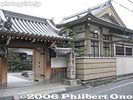
Temple with road marker162 views
|
|

Take a bus from JR Kusatsu Station. Admission 750 yen for adults. MAP162 views
|
|

Fish in Reed Beds & Attached Lakes 内湖・ヨシ原にすむ魚 - Reeds are a haven for carps (wataka, ginbuna), bitterlings, gudgeons, and mussels. Invasive species (black bass, bluegill) dominate such habitats today.162 views
|
|

Biwa-kogata-sujishima spiny loach (ビワコガタスジシマドジョウ) - Endangered endemic species162 views
|
|

Dark chub (カワムツ) - Native species162 views
|
|

Lake trout (レイクトラウト) from The Great Lakes, North America162 views
|
|

Hari-bune, a traditional fishing boat mainly for longline fishing (延縄). There is no half-round log on the side, so it is not a maruko-bune. ハリブネ162 views
|
|

From 2006 to 2010, Dr. Grygier supervised the museum's comprehensive project: Exploration of the Biological Diversity of Lake Biwa and its Watershed: Taxonomy and Morphology- & Molecule-based Phylogeny162 views
|
|

Pachycordyle kubotai - First discovered in Lake Biwa in mid-1990s by Dr. Oleg A. Timoshkin of the Limnological Institute, Siberian Branch of the Russian Academy of Sciences.162 views
|
|

Biwa-higai gudgeon (ビワヒガイ) - Endemic species161 views
|
|

Electric catfish (デンキナマズ) from Lake Tanganyika, Africa161 views
|
|

Endemic mussel used to produce Biwa pearls, now extinct.161 views
|
|

Fish Conservation and Breeding Center 保護・増殖センター - They breed endangered freshwater fish species and research breeding methods.160 views
|
|

Iridescent shark (カイヤン) from Tonlé Sap Lake, Cambodia.160 views
|
|

Sturgeon are ancient fish160 views
|
|

Mie elephants once roamed this area.160 views
|
|

Abura-higai gudgeon (アブラヒガイ) - Endangered endemic species159 views
|
|

Northern snakehead (カムルチー) - Invasive species, eats aquatic insects, mollusks, and carp.159 views
|
|

159 views
|
|

Maruki-bune replica displayed at the Azuchi Castle Archaeological Museum in Omi-Hachiman. 滋賀県立安土城考古博物館159 viewsIn 1990, the Shiga Prefectural Association for Cultural Heritage had this replica made for a successful voyage from northern Nagahama to Chikubushima island, proving its viability.
|
|

Enter the crayfish and control its claws. ザリガニになろう159 views
|
|

Closeup of road marker indicating the Tokaido Road to the right and Nakasendo to the left.158 views
|
|

Lake Biwa's North Basin.158 views
|
|

Awazu Shell Mound of food waste from 4,500 years ago excavated in 1990-91 near Seta River. 粟津貝塚158 views
|
|

The museum's maruko-bune was built by Shiga's last maruko-bune builder, Matsui Sanshiro (松井三四郎) and his son in 1995 in Seta, Otsu.158 views
|
|

Huge lotus pond at Karasuma Peninsula in Kusatsu, Shiga. Used to bloom in summer.157 views
|
|

Jodan no Ma - Kusatsu-juku Honjin. The Gyokuza raised tatami mats was where the lord or Emperor slept or sat. 上段の間157 viewsReserved for daimyo warlords, emperors, etc.
|
|

The Kusatsu Shukuba Matsuri Festival is held on April 29 to celebrate Kusatsu's history as a post town on the Nakasendo and Tokaido Roads. Numerous events and activities are held such as flea markets, street & stage performances, and Japanese dan157 viewsThis was the first time I saw hula dancing in Shiga. Surprised to see hula dancing (Kusatsu Station plaza).
|
|

Utsusemi-kajika sculpin (ウツセミカジカ) - Endangered endemic species157 views
|
|

Japanese stream toad (ナガレヒキガエル) - Native species, endemic to Japan.157 views
|
|

People and Lake Biwa - Exhibition Gallery B 人と琵琶湖の歴史(B展示室)157 views
|
|

Underwater foundation of the Seta-no-Karahashi Bridge from the 7th century. Discovered in 1988 about 80 meters downstream from the present bridge.157 views
|
|

Mt. Mikami in background of lotus pond in Kusatsu.156 views
|
|

156 views
|
|

See how our lives have changed during 1955 to 2005. Represented by technology and pop culture. わたしたちくらし50年156 views
|
|

156 views
|
|

Donko sleeper (ドンコ) - Native species endemic to Japan.155 views
|
|

Tanago bitterling and clam (タナゴ) - Endangered native species, endemic to Japan, lays eggs in living clams.155 views
|
|

Hariyo three-spined stickleback - Endangered native species (ハリヨ)155 views
|
|

Tinfoil barb (シルバーバルブ) from Tonlé Sap Lake, Cambodia155 views
|
|

Sturgeon is also famous for caviar.155 views
|
|

Lake Biwa and the Lakes of the World155 views
|
|

Geological History of Lake Biwa - Exhibition Gallery A 琵琶湖のおいたち(A展示室)155 views
|
|

The sail is made of thick cotton material, replacing the old straw mat that didn't last long.155 views
|
|

Rudder hangs down from a torii-like brace (かさ木), also used as a mast rest when the mast is laid down.155 views
|
|

Ostracod from Lake Biwa. Dr. Robin J. Smith from the UK is the ostracod specialist at Lake Biwa Museum.155 views
|
|

Utsusemi-kajika sculpin (ウツセミカジカ) - Endangered endemic species154 views
|
|

Red swamp crayfish (アメリカザリガニ) - Invasive species, destroys water plants, outcompetes others for food.154 views
|
|

Humans appeared around Lake Biwa about 9,000 years ago, mainly along the South Basin. They ate nuts, lake fish and shellfish, and wild animals.154 views
|
|

At 19 meters long, 2.4 meters wide, and 12 meters high.154 views
|
|

Sturgeon feeding153 views
|
|

Replica of a Stegodon elephant skeleton similar to the Mie elephant that roamed along the shores of Lake Biwa's forerunner lake 3.5 to 4 million years ago.153 views
|
|

Two million years ago, the Mie elephant had become extinct and this smaller Akebono elephant lived in Shiga until it became extinct 1 million years ago. Mie elephants roamed a subtropical lake land 3 to 4 million years ago.153 views
|
|

Born in 1913, Mr. Matsui built several maruko-bune until the 1930s. The completed boat sailed to the museum.153 views
|
|

Freshwater jellyfish (マミズクラゲ) - Likely the world's longest exhibit of freshwater jellyfish (since Aug. 2, 2012). (No longer displayed in the Discovery Room).153 viewsAlthough these delicate jellyfish live all over Japan, they appear and disappear at a whim. So it's hard to catch them for a continuous exhibit.
|
|

Feeding time for sturgeon.152 views
|
|

They grow from polyps and feed on plankton for a 6-month lifespan. They like non-filtered and non-circulating water. The museum succeeded in breeding and raising freshwater jellyfish. This display will continue as long as possible.152 views
|
|

152 views
|
|

Kusatsu-juku Honjin on the Tokaido Road. MAP151 views
|
|

This lake got larger and deeper as geological protuberances 400,000 years ago pushed it to where Lake Biwa is today. South Basin on the left is much shallower than the North Basin.151 views
|
|

151 views
|
|

Seta-no-Karahashi Bridge on the old Tokaido Road over the Seta River in Otsu. It was the eastern gateway to Kyoto. 瀬田の唐橋151 views
|
|

Maruko-bune were a vital transportation link between northern Japan and Kyoto/Osaka. Goods coming and going via the Sea of Japan also went over the lake.151 views
|
|

Most of the wood is Japanese conifer (槇の木). 151 views
|
|

The bow's tip is studded.151 views
|
|

Maruko-bune transported rice, fish, kelp, and many other northern Japan goods bound for Kyoto/Osaka. From Kyoto, came cotton, confections, soy sauce, sake, kimono, textiles, tobacco, and more.151 views
|
|

Exhibit of sow bugs in Shiga (ワラジムシ). Sow bugs are crustaceans. During the 2006-2010 survey, 22 species of sow bugs were found in Shiga. 151 viewsSeven of them were previously unknown (pink), but not necessarily endemic to Shiga.
|
|

150 views
|
|

Lake Biwa's forerunner Lake Oyamada emerged about 4 million years ago southeast of Shiga in Iga, Mie Prefecture. Over millions of years, at least two lakes formed and disappeared before Lake Katata (western Otsu) formed.150 views
|
|

Lake Biwa's endemic species. The lake's long history and diverse habitats (rocky areas, sandy beaches, attached lakes, reeds, cold waters, pelagic zones) gave rise to these 17 endemic fish and 30 mollusk species.150 views
|
|

Black copper plates decorate the bow (ダテカスガイ). The wood seams are stuffed with conifer fiber (槙縄) to repel water.150 views
|
|

Maruko-bune's trademark is this half-round cedar or cypress log on both sides. おも木150 views
|
|

Gallery C - Large floor photo of the Lake Biwa basin. About 120 rivers flow into Lake Biwa. 琵琶湖盆地150 views
|
|

Discovery Room - Hands-on exhibits for kids (free admission) ディスカバリールーム150 views
|
|

Side view of a female, Fabaeformiscandona akaina, 1.3 mm long. Ostracod known only from Lake Biwa, recorded at depths down to 31 m. Photo courtesy of Robin J. Smith.150 views
|
|

150 views
|
|

Touching Corner ふれあい体験室 - Petting zoo for crayfish and small fish.149 views
|
|

Life in the countryside before tap water and sewerage. Rural kitchen sink called kawaya. 農村のくらし149 views
|
|

Library - Reading room and kids books (free admission) 図書室149 views
|
|

Kusatsu River148 views
|
|

148 views
|
|

Shiga's ostracods are tiny aquatic crustaceans with a hinged, rounded shell. Usually 0.3 mm to 5 mm long, living on the lake bottom or on water plants. Appendages are extended through a slit in the shell for crawling, digging, eating, etc.148 views
|
|

147 views
|
|

USA (Great Lakes)147 views
|
|

Other exhibition rooms147 views
|
|

Seventeen million years ago, southeastern Shiga was under a warm ocean. Fossils of dolphins and this baleen whale bone (replica) have been found in Tsuchiyama, Koka.147 views
|
|

The boat's bottom is flat, suited for shallow waters. 147 views
|
|

Water was taken from a ditch and well. The fish in the ditch ate food scraps from washed dishes.147 views
|
|

The center fence thus leads the fish to the trap holes (ツボ) in the trap's labyrinth.147 views
|
|

Museum restaurant147 views
|
|
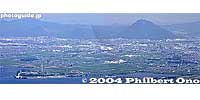
Kusatsu as seen from Mt. Hiei146 viewsKarasuma Peninsula is also visible.
|
|

Genkan Hiroma entrance hall straight ahead. It was the entrance for daimyo feudal lords. 玄関広間146 views
|
|

The shells are mostly endemic Seta shijimi clams.146 views
|
|

The cargo was mainly rice, fish, and kelp.146 views
|
|

Checkered pattern was unique to Lake Biwa boats.146 views
|
|

Traditional eri is an arrow-shaped bamboo fence in the water pointing away from shore. When fish encounters the center fence, it instinctively swims toward deeper water. 早崎内湖ビオトープ146 views
|
|

Oiwake Guidepost road marker at the intersection of the Tokaido and Nakasendo Roads. The left side says "Left for Nakasendo Road" and the right side says "Right for Tokaido Road."145 views
|
|

Aquatic parasites. A few are endemic to Lake Biwa.145 views
|
|

Jodan no Ma: Kusatsu-juku Honjin's best room in the house. Reserved for daimyo warlords, emperors, etc. 上段の間144 views
|
|

Kusatsu as seen from Mt. Hiei143 views
|
|

Kusatsu-juku Honjin entrance. This Honjin in Kusatsu is a very impressive example of traditional architecture. It is designated as a National Historical Place. It underwent a complete renovation and reconstruction during 1989 to 1995. Admission 200 yen.143 views
|
|

Fish's view of going to the trap hole. Eri has been in use for 1,500 years. Eri today have more sophisticated shapes and use modern materials instead of bamboo.143 views
|
|

Exhibit of live plankton collected from Lake Biwa every morning.143 views
|
|

Research wing of Lake Biwa Museum143 views
|
|

Kusatsu Shukuba Matsuri is held on April 29 to celebrate Kusatsu's history as a stage town on the Nakasendo and Tokaido Roads. The main highlight is this Kusatsu Jidai Gyoretsu procession from 11:45 am to 2 pm. This is the Tokaido Road.142 views
|
|

Riverside forests in Shiga are now rare due to development. They were a wildlife haven. The bamboo was also useful. 川岸林142 views
|
|

Observe live plankton through the microscope or on the monitor. A high concentration of plankton is obtained from a net thrown 10 meters into Lake Biwa.142 views
|
|

Urinal (made of lacquered wood) for warlords. The room has two tatami mats. Right below the urinal is a bamboo mat. Above is a small shoji paper window to provide light.141 views
|
|

Toilet (made of lacquered wood) for warlords. This is a separate room adjacent to the urinal. It also has two tatami mats. The walls are plain and not decorated. The toilet had a box which was likely replaced each time it was used. 上段雪隠141 viewsThis is a separate room adjacent to the urinal. It also has two tatami mats. The walls are plain and not decorated. The toilet had a box which was likely replaced each time it was used.
Jodan settin
上段雪隠
|
|

Model of the town at the Kusatsu-juku Kaido Koryu-kan 140 views草津街道交流館
|
|

139 views
|
|

Jodan no Ma - Kusatsu-juku Honjin's best room in the house. Reserved for daimyo warlords, emperors, etc. 上段の間138 views
|
|

Palanquin at Kusatsu-juku Kaido Koryu-kan 草津街道交流館138 viewsFor photos.
|
|

Fisherman scooping fish from a traditional fish trap called eri. エリ138 views
|
|

Jodan no Ma - Kusatsu-juku Honjin's best room in the house137 viewsReserved for daimyo warlords, emperors, etc. The room had an elevated tatami mat for the person to sit and sleep on.
上段の間
|
|

Kusatsu-juku Honjin guest book. See the names of Kira and Lord Asano both of whom once lodged at this Honjin (at different times). These two men later became adversaries which led to the legendary chushingura or vendetta of the 47 masterless samurai. 大�136 viewsYou can see the names of Kira and Lord Asano both of whom once lodged at this Honjin (at different times). These two men later became adversaries which led to the legendary chushingura or vendetta of the 47 masterless samurai.
大福帳
|
|

Road marker at the intersection of the Tokaido and Nakasendo Roads135 viewsThis tunnel goes under the Kusatsu River.
|
|

Sekifuda name plates in Genkan Hiroma entrance hall. This is what you see when you enter the Honjin through the Genkan Hiroma entrance hall. The name plate for the warlord staying at the lodge was displayed. 玄関広間135 viewsThis is what you see when you enter the Honjin through the Genkan Hiroma entrance hall. The name plate for the warlord staying at the lodge was displayed here.
|
|

Mukae Jodan no Ma. Painting on the fusuma sliding doors by Matsumura Keibun. 向上段の間135 views
|
|

The lotus used to bloom in July. In 1975, there was only 4 hectares. By 2004, it covered 13 hectares.134 views
|
|

Kusatsu-juku Kaido Koryu-kan133 views草津街道交流館
|
|

Outdoor garden132 views
|
|

Yudono bath room for warlords. The hot water was heated nearby and carried to this room. 湯殿132 views
|
|

Mukae Jodan no Ma 向上段の間132 views向上段の間
|
|
|

About the Kusatsu-juku Honjin130 views
|
|

Bath for feudal lords130 viewsLooks kind of small to me.
湯殿
|
|

Road marker plaque129 views
|
|

Kitchen (Daidokoro doma). Dirt-floored room with wood-heated stoves. High ceiling with no chimney, but the ceiling has a covered opening. 台所土間129 views
|
|

Edo Period Buddhist nun128 views
|
|

Marker for Emperor Meiji's visit and outdoor garden127 views
|
|

Kusatsu-juku Kaido Koryu-kan. Sample food from the old days, dinner on left and breakfast on right. 草津街道交流館127 views
|
|

126 views
|
|

Kusatsu history124 viewsBeing a stage town along the Tokaido Road connecting Edo (Tokyo) and Kyoto, Kusatsu had over 70 inns for travelers. The best inn was the Honjin, reserved for daimyo warlords, Imperial family members, etc.
|
|

Kusatsu-juku Honjin corridor. Pass by numerous Japanese-style rooms. 畳廊下124 views畳廊下
|
|

Ukiyoe prints of Kusatsu-juku at Kusatsu-juku Kaido Koryu-kan 草津街道交流館124 views
|
|

Photo op room at Kusatsu-juku Kaido Koryu-kan. You can dress up as a traveler on the Tokaido/Nakasendo Road and take a picture of yourself. You can even sit in the palanquin. A tripod is provided too. 草津街道交流館122 views
|
|

120 views
|
|

118 views
|
|

Kusatsu-juku Kaido Koryu-kan. Terminals are provided to find information about Kusatsu. 草津街道交流館 MAP118 views
|
|

Kusatsu-juku Kaido Koryu-kan 草津街道交流館118 views
|
|

Honjin owner Tanaka's house117 views
|
|

Honjin owner Tanaka's house116 views
|
|

Kusatsu-juku Kaido Koryu-kan is a history museum with various exhibits showing Kusatsu's post town history. Admission 200 yen. You can buy a set ticket good for both the Honjin and this history museum. 草津街道交流館116 views
|
|

115 views
|
|

114 views
|
|
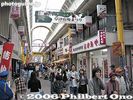
Shopping mall114 views
|
|

Honjin owner's house113 views
|
|
|

Ceiling107 views
|
|

Shukuba Odori dance in the shopping arcade.107 viewsHeld 11:00 - 12:00
|
|

107 views
|
|

The women only leave the shrine for their own procession.107 views
|
|

106 views
|
|
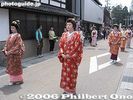
105 views
|
|
|

JR Kusatsu Station in spring.103 views
|
|

The Kusatsu-juku Honjin is decorated with curtains. MAP102 views
|
|

102 views
|
|

101 views
|
|
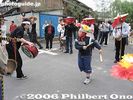
Practicing for the local sanyare festival. The Kusatsu Sanyare dance has been inscribed as a UNESCO Intangible Cultural Heritage in 2022 as one of Japan's furyu-odori (風流踊) ritual dances.101 views
|
|

100 views
|
|

100 views
|
|

Daimyo Gyoretsu (Feudal Lord) procession 大名行列100 views
|
|

99 views
|
|

99 views
|
|
|
|